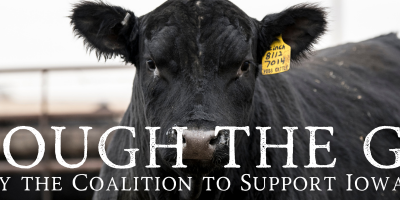CSIF Tips of the Month – May 2013
05-03-2013 in Through The Gate
Rules and Regulations Highlight
Prepare your farm for an aerial inspection
If the thought of EPA flying over your farm makes you nervous, now is the time get your questions answered and fix any potential problems. Both DNR and EPA have indicated they will be doing inspections of livestock and poultry farms around the state, including on-site inspections, aerial surveillance and computer-based inspections (i.e. looking at the images on Google Earth and other websites with aerial images).
Here are some questions to ask yourself to prepare your farm to pass an inspection:
- Is there runoff from your livestock pens, feed storage or feeding areas, and/or manure or bedding stockpiles reaching a nearby stream or river? If this is happening, contact the Coalition for suggestions on how to correct the problem.
- Are you counting the number of animals correctly? To determine federal compliance, animals in confinement need to be added to the animals in open lots. Also, if you have enough of one species to be considered a large CAFO (1,000 animal units), then all livestock, no matter the species, are counted, and runoff from those facilities must be contained, too.
- Do you have a manure/nutrient management plan? Be sure to keep records to show you are following the plan.
Here are some tips in the case you receive a surprise inspection. If you have questions, please contact the Coalition to Support Iowa’s Farmers (CSIF) at 1-800-932-2436. Remember everything is kept confidential and there is no charge for our services.
Stockpiling manure: How to stay in compliance
With spring fieldwork starting, manure from many of Iowa’s livestock and poultry farms will need to be stockpiled until it can be land-applied this fall.
There are a few rules that apply to stockpiles that you need to be aware of:
- Stockpiles need to be 200 feet from a terrace tile inlet or surface tile inlet, 400 feet from a designated area, and 800 feet from a high quality water source. Stockpiles from confinements must be 1,250 feet from a neighboring residence.
- Stockpiles are prohibited on grassed waterways or where water pools on the surface or has concentrated flow.
- They are also prohibited on land with slopes greater than 3 percent unless methods, structures or practices contain the stockpiled manure — such as hay bales, silt fences or temporary earthen berms — to prevent runoff.
- Avoid karst and alluvial soils.
- Stockpiles within 1,250 feet of each other are considered part of the same stockpile.
For more specific information, please refer to DNR’s stockpiling factsheets:
Open feedlot manure stockpiling
Dry-bedded manure stockpiling
Confinement dry manure (i.e. turkey and chicken confinements) stockpiling
Siting Tips
Don’t skip the neighbor relations plan
When you’re ready to put up a new facility, there are many I’s to dot and T’s to cross (here is a checklist). But there’s one important step that can be easy to miss and/or skip in the process. This step can admittedly be uncomfortable for some, but its importance can’t be emphasized enough.
In today’s information age, knowledge is power. Most neighbors want to know before you make changes to your farm, especially if you’re putting up a new livestock or poultry facility. And they want to know how it’s going to affect them – this is your chance to dispel any myths they may have heard. They want to hear it “straight from the horse’s mouth” – from you – not a rumor at the coffee shop. Whether you anticipate your neighbors being okay with it, or upset, you still need to communicate with them.
But before you go talk to your neighbors, you need to be prepared. Here are a few tips to help you get started. For advice specific to your situation, feel free to contact any of the coalition staff members at 800-932-2436.
Quote of the Month
“I contacted the Coalition when I decided to grow my family’s Hamilton County livestock farm. They had the knowledge and expertise we needed to responsibly grow our farm and make sure it stays in the family for future generations. I would recommend the Coalition to any livestock farmer that needs a helping hand.” – Scott Tapper a 5th generation farmer who raises hogs near Kamrar
Recommended News

Through the Gate // June 2025
Stay updated with the Coalition to Support Iowa's Farmers. Discover events and more.
Read More
Through the Gate // May 2025
Stay updated with the Coalition to Support Iowa's Farmers. Discover events and more.
Read More
Through the Gate // April 2025
Stay updated with the Coalition to Support Iowa's Farmers. Discover events and more.
Read More